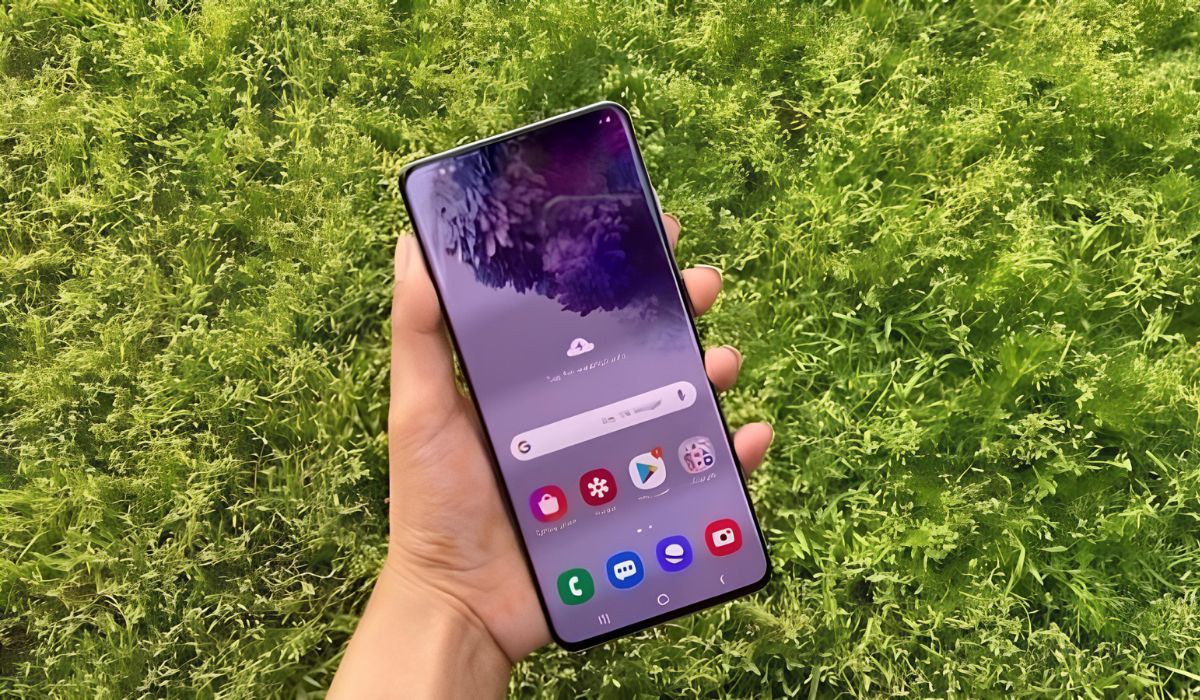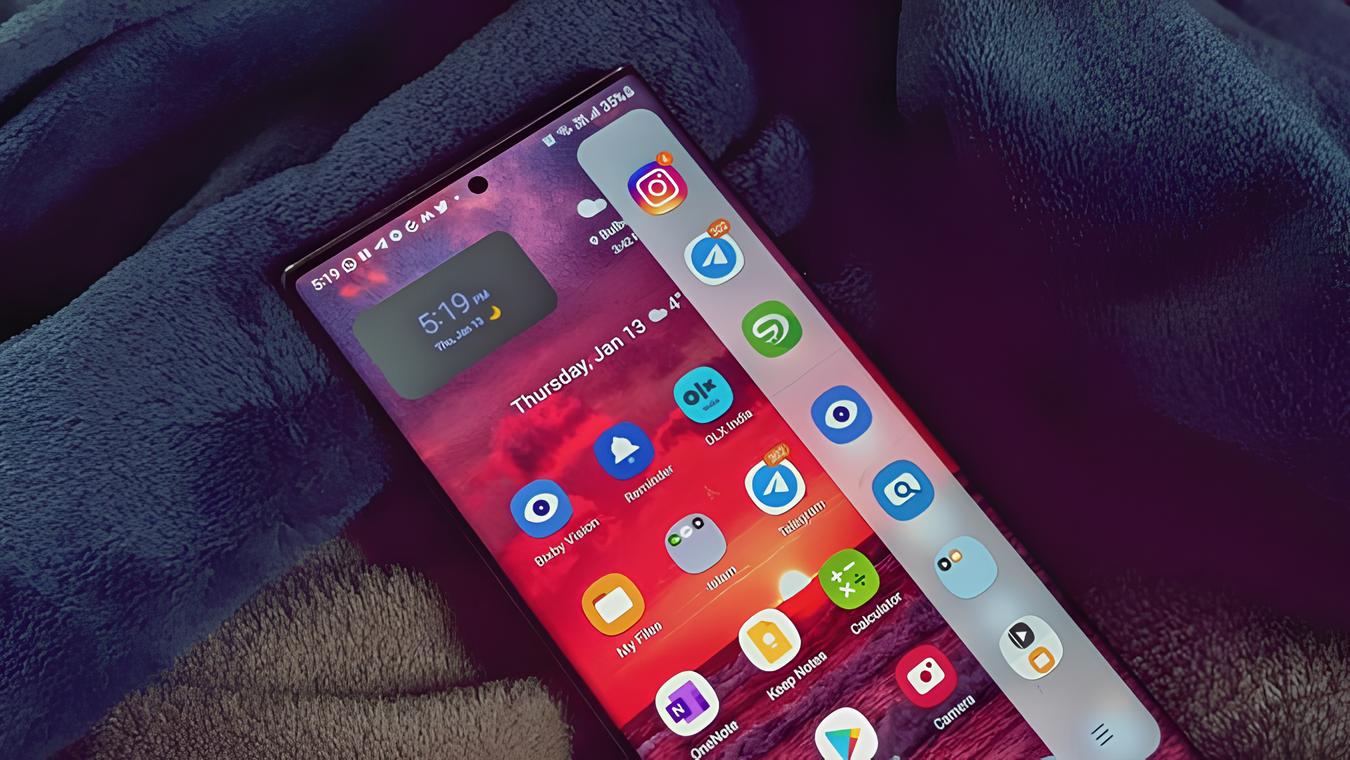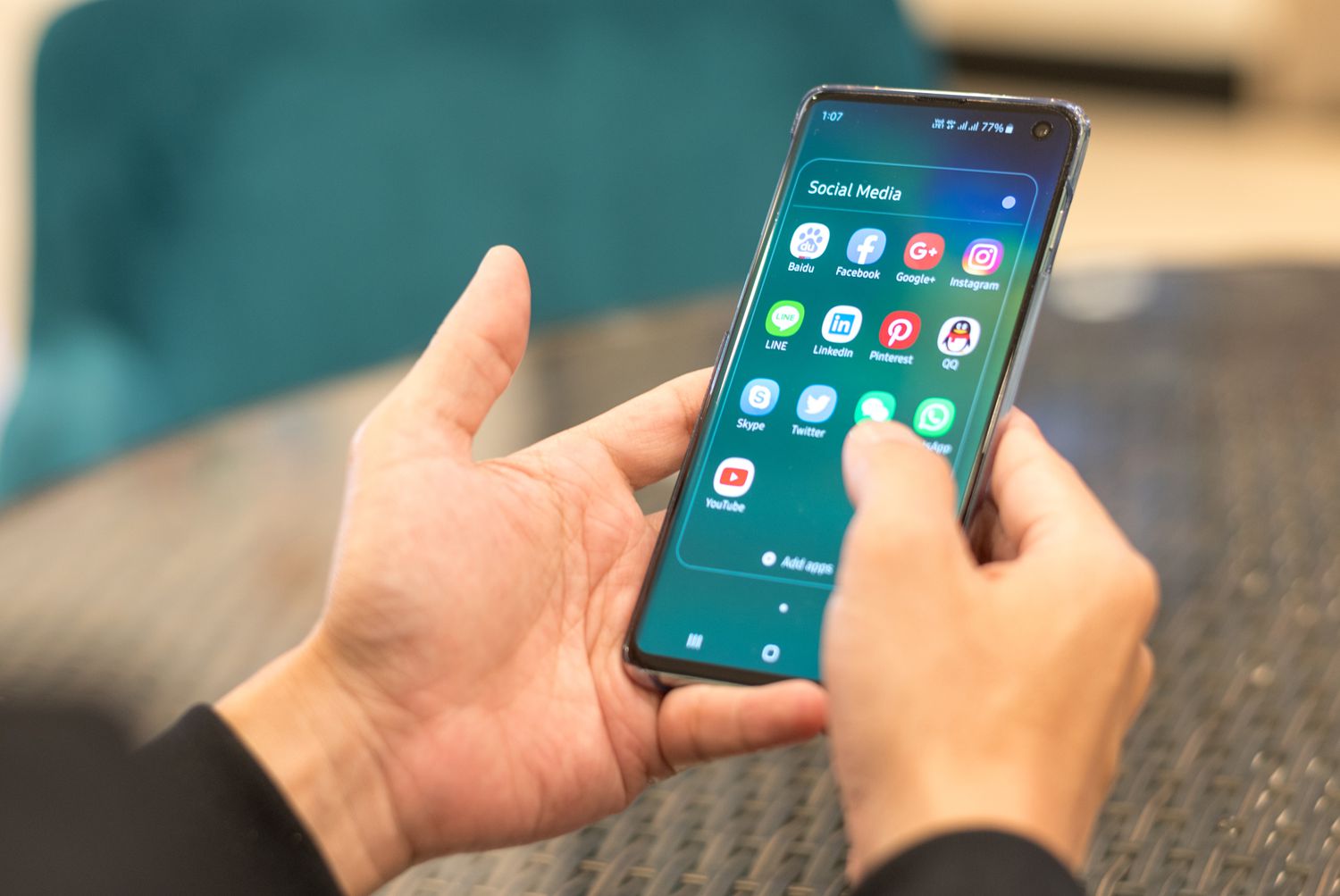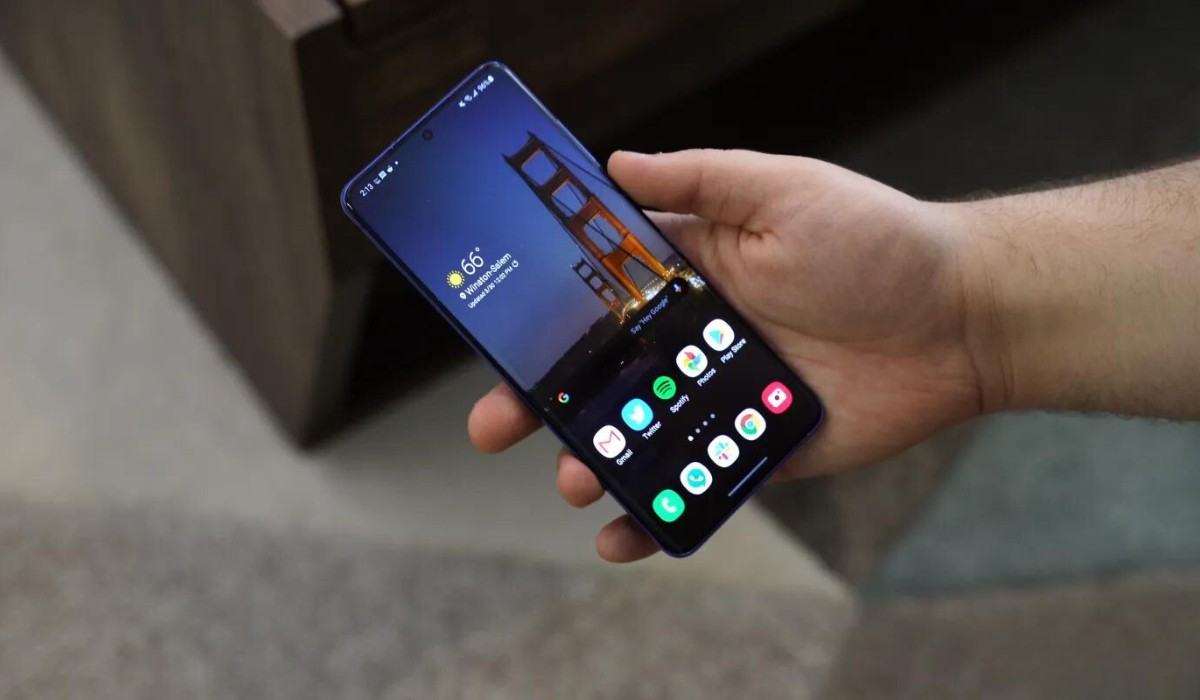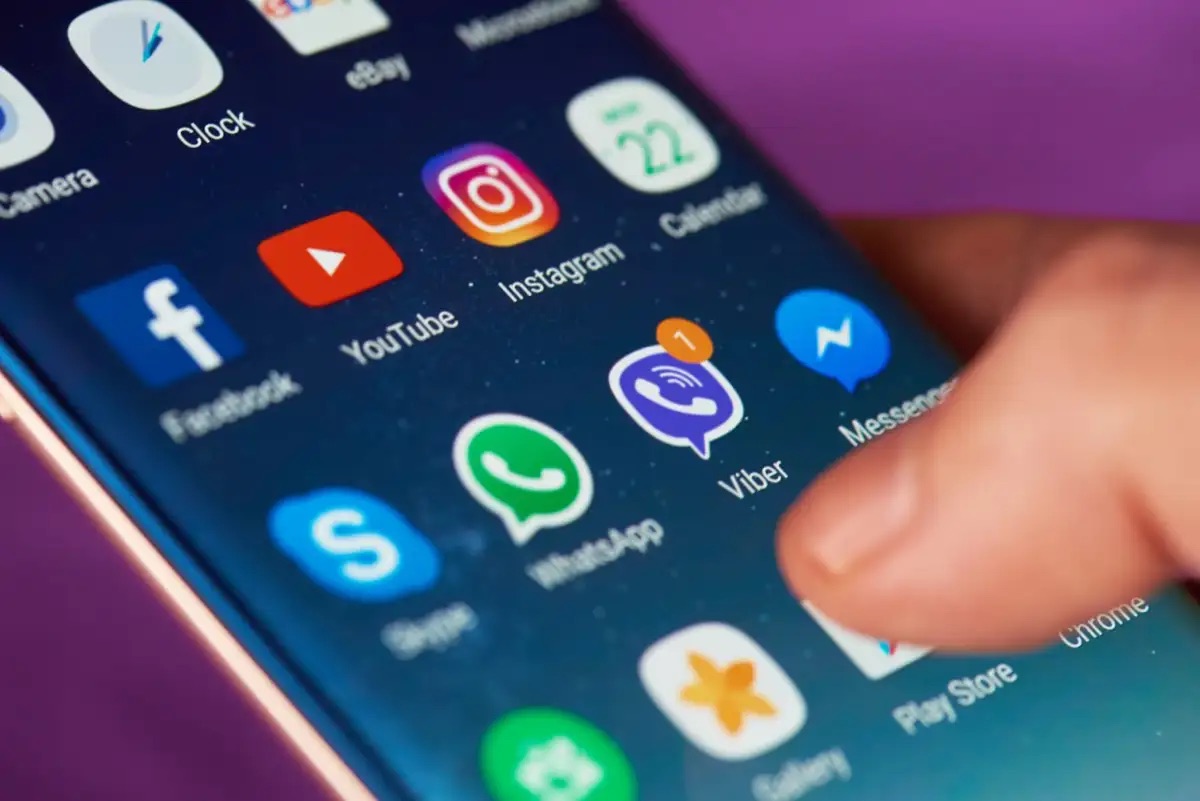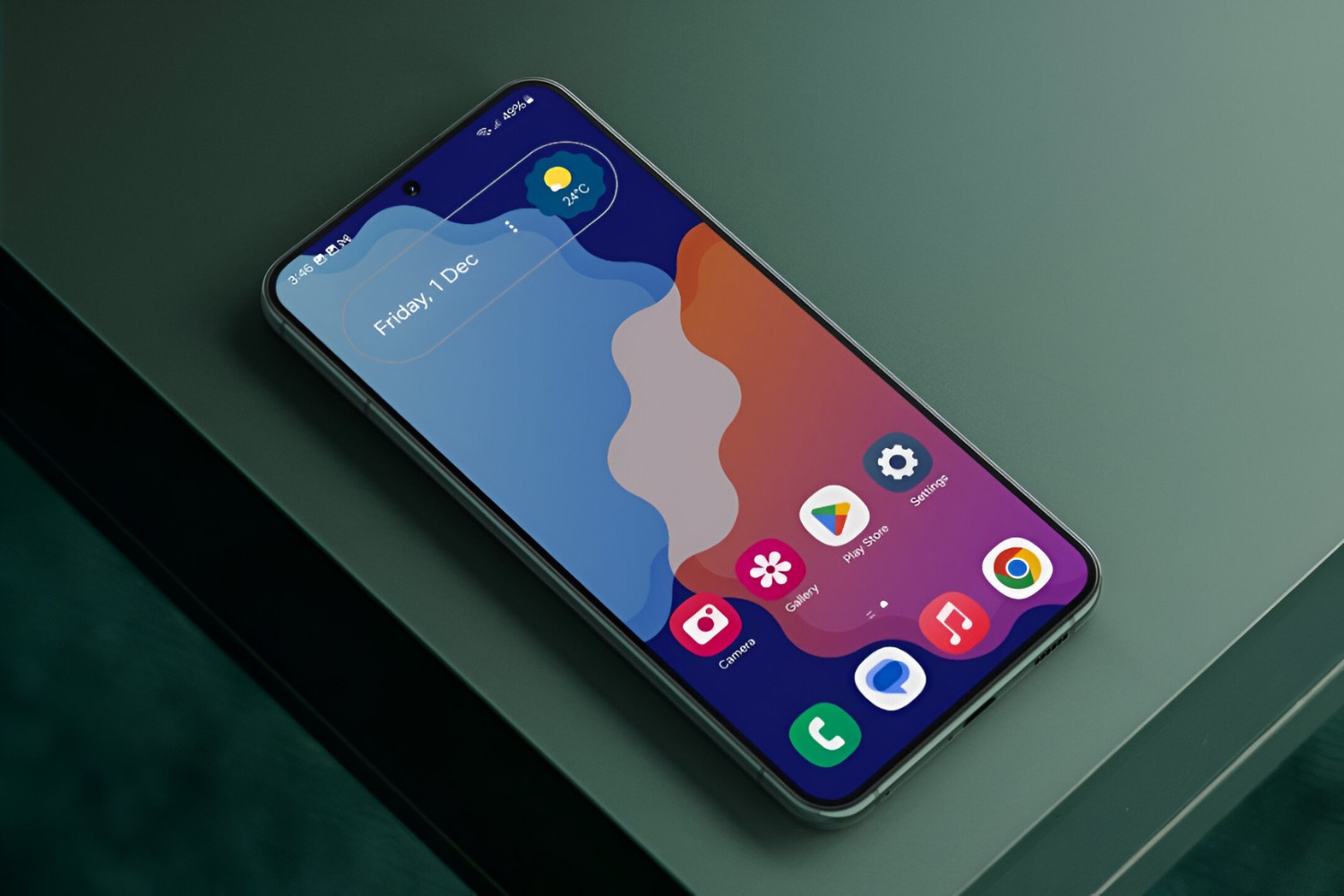Introduction
The Samsung S20 is a powerhouse of a smartphone, equipped with a plethora of features designed to enhance user experience. One of the most frequently used features is the ability to customize the home screen by organizing and moving apps. This functionality allows users to tailor their home screen to their specific needs, making it more efficient and visually appealing.
In this comprehensive guide, we will delve into the step-by-step process of organizing your Samsung S20 home screen. Whether you're a tech-savvy individual or a newcomer to the world of smartphones, this guide will walk you through the process with clarity and precision. By the end of this tutorial, you will have the knowledge and confidence to rearrange your apps, create folders, and customize app icons on your Samsung S20.
Let's embark on this journey to unlock the full potential of your Samsung S20 home screen. Get ready to discover the seamless and intuitive methods for optimizing your app layout and enhancing the overall functionality of your device. Whether you're looking to streamline your productivity or simply add a personal touch to your smartphone, the following steps will empower you to take full control of your Samsung S20 home screen.
Step 1: Accessing the Home Screen
Accessing the home screen on your Samsung S20 is the first step towards customizing and organizing your apps. The home screen serves as the central hub where you can arrange your frequently used apps, widgets, and shortcuts for quick and easy access. Here's how to navigate to the home screen:
-
Unlock Your Device: If your device is locked, simply use your preferred method of unlocking, such as entering your PIN, pattern, or using the fingerprint or facial recognition feature.
-
Return to the Home Screen: If you are currently using an app or are on a different screen, you can return to the home screen by pressing the home button. On the Samsung S20, the home button is located at the bottom center of the screen. A single press on this button will take you back to the main home screen, where you can begin organizing your apps.
-
Swipe Gesture: Alternatively, you can use a swipe gesture to access the home screen. Simply swipe up from the bottom of the screen to smoothly transition to the home screen. This intuitive gesture provides a seamless way to access your home screen without the need for physical buttons.
-
Navigation Bar: The navigation bar, located at the bottom of the screen, also offers a quick way to return to the home screen. Simply tap the home icon on the navigation bar to instantly navigate to the central home screen of your Samsung S20.
Once you have successfully accessed the home screen, you are ready to proceed with the next steps in organizing your apps, creating folders, and customizing app icons. The ability to effortlessly access the home screen is the foundation for personalizing your Samsung S20 and optimizing your user experience. With these simple methods, you can easily navigate to the home screen and begin the process of customizing your device to suit your preferences and lifestyle.
Step 2: Moving Apps
Moving apps on your Samsung S20 is a straightforward process that allows you to arrange your home screen to better suit your preferences and usage patterns. Whether you want to group similar apps together or place frequently used apps within easy reach, the ability to move apps provides a high level of customization. Here's a detailed guide on how to move apps on your Samsung S20:
-
Long-Press an App: Begin by locating the app you wish to move. Long-press the app icon until the screen enters edit mode. You will notice the app icons start to wiggle, indicating that you can now move them around.
-
Drag the App: Once the app icons are in wiggle mode, simply drag the app to the desired location on the home screen. As you drag the app, you will notice other app icons making space for the one you are moving. This dynamic rearrangement allows you to position the app precisely where you want it.
-
Move to Another Screen: If you want to move the app to a different home screen panel, drag it to the edge of the screen. This action will transition the screen to the next panel, where you can drop the app into the desired location.
-
Create Space: If the destination area is occupied, you can create space by moving existing apps to different locations. This flexibility enables you to organize your apps efficiently, ensuring that each app is easily accessible and logically placed.
-
Drop the App: Once you have positioned the app in the desired location, simply release your finger to drop the app into place. The app icons will stop wiggling, indicating that the editing mode has been exited, and the app is now in its new position.
By following these simple steps, you can effortlessly rearrange your apps on the Samsung S20 home screen. This level of customization empowers you to create a layout that aligns with your usage habits and enhances the overall usability of your device. Whether you prefer a neatly organized home screen or a more personalized arrangement, the ability to move apps provides the flexibility to tailor your Samsung S20 to your unique preferences.
Step 3: Creating Folders
Creating folders on your Samsung S20 is a practical and efficient way to declutter your home screen while keeping your apps organized and easily accessible. Whether you want to group similar apps, categorize them by function, or simply streamline your home screen, the ability to create folders provides a high level of customization. Here's a detailed guide on how to create folders on your Samsung S20:
-
Long-Press an App: To initiate the folder creation process, start by long-pressing an app icon on the home screen. This action will trigger the app icons to enter edit mode, indicated by their subtle movement or a change in appearance.
-
Drag the App onto Another: While in edit mode, drag the selected app icon and place it on top of another app icon that you want to include in the same folder. As you do this, a new folder will automatically be created, and both apps will be placed within it.
-
Name the Folder: Once the apps are combined into a folder, the system will prompt you to name the folder. This step allows you to assign a relevant name that reflects the contents of the folder. For example, if you are grouping social media apps, you can name the folder "Social" for easy identification.
-
Add More Apps: After creating the initial folder, you can continue to add more apps by dragging them into the folder. This process enables you to consolidate multiple apps under a single, easily accessible location on your home screen.
-
Customize the Folder: Samsung S20 provides options to customize the folder's appearance. You can choose a color for the folder, change its name, and even add a custom icon to further personalize the folder's visual representation.
By following these simple steps, you can efficiently create folders on your Samsung S20 home screen, allowing you to streamline app access and reduce clutter. This level of customization empowers you to maintain a well-organized home screen that aligns with your usage habits and enhances the overall usability of your device. Whether you prefer a minimalist approach or a more detailed categorization, the ability to create folders offers the flexibility to tailor your Samsung S20 to your unique preferences.
Step 4: Customizing App Icons
Customizing app icons on your Samsung S20 allows you to add a personal touch to your device, making it visually appealing and tailored to your preferences. With the ability to change app icons, you can create a cohesive and aesthetically pleasing home screen that reflects your individual style. Here's a detailed guide on how to customize app icons on your Samsung S20:
-
Select an App: Begin by choosing the app for which you want to customize the icon. This could be a frequently used app or one that you want to stand out on your home screen.
-
Long-Press the App: Press and hold the app icon to enter the edit mode. Once in edit mode, a menu will appear, providing various options for customizing the app.
-
Choose "Edit" or "Icon Settings": Depending on your device's software version, you may see an "Edit" option or "Icon Settings" directly in the menu. Selecting this option will allow you to proceed with customizing the app icon.
-
Select a New Icon: Upon accessing the icon settings, you will have the option to choose a new icon for the app. Samsung provides a range of icon styles, themes, and designs to select from, enabling you to find the perfect match for your desired look.
-
Apply the New Icon: Once you have chosen the new icon, simply apply the changes. The selected app icon will now be replaced with the new design, instantly refreshing the visual appearance of the app on your home screen.
-
Explore Customization Options: Samsung S20 offers additional customization options, allowing you to further personalize the app icons. You can adjust the size, shape, and style of the icons to create a cohesive and visually appealing layout.
By following these steps, you can effortlessly customize app icons on your Samsung S20, infusing your home screen with a personalized and visually engaging aesthetic. Whether you prefer a minimalist and uniform look or a vibrant and eclectic display, the ability to customize app icons empowers you to curate a home screen that resonates with your unique style and preferences. With a diverse range of icon designs and customization options at your fingertips, you can transform the visual identity of your apps, creating a captivating and personalized user experience on your Samsung S20.
Conclusion
In conclusion, the Samsung S20 offers a wealth of customization options for organizing and personalizing the home screen. By following the step-by-step guide provided in this article, users can seamlessly arrange their apps, create folders, and customize app icons to suit their individual preferences and usage habits. The ability to access the home screen with ease sets the stage for a personalized and efficient user experience. Whether through traditional button presses or intuitive swipe gestures, navigating to the home screen is a simple and essential first step in the customization process.
Moving apps on the Samsung S20 empowers users to tailor their home screen layout, ensuring that frequently used apps are conveniently positioned for quick access. The flexibility to drag apps between screens and create space for new arrangements allows for a personalized and efficient organization of apps. Furthermore, the creation of folders provides a practical solution for decluttering the home screen and categorizing apps based on their functions or usage scenarios. With the option to customize folder appearances, users can visually enhance their home screen while maintaining a well-organized layout.
The ability to customize app icons adds a layer of personalization and creativity to the Samsung S20 home screen. By selecting new icons, adjusting their styles, and exploring various customization options, users can curate a visually captivating and cohesive home screen that reflects their unique style and preferences. This level of customization extends beyond mere functionality, allowing users to infuse their devices with a personalized touch that resonates with their individuality.
In essence, the Samsung S20 empowers users to go beyond the standard layout and create a home screen that is both functional and visually appealing. The seamless integration of app organization, folder creation, and app icon customization provides a comprehensive toolkit for users to personalize their devices to align with their lifestyle and preferences. Whether aiming for a minimalist, streamlined look or a vibrant, expressive display, the Samsung S20 offers the flexibility and tools to bring each user's vision to life on their home screen.









